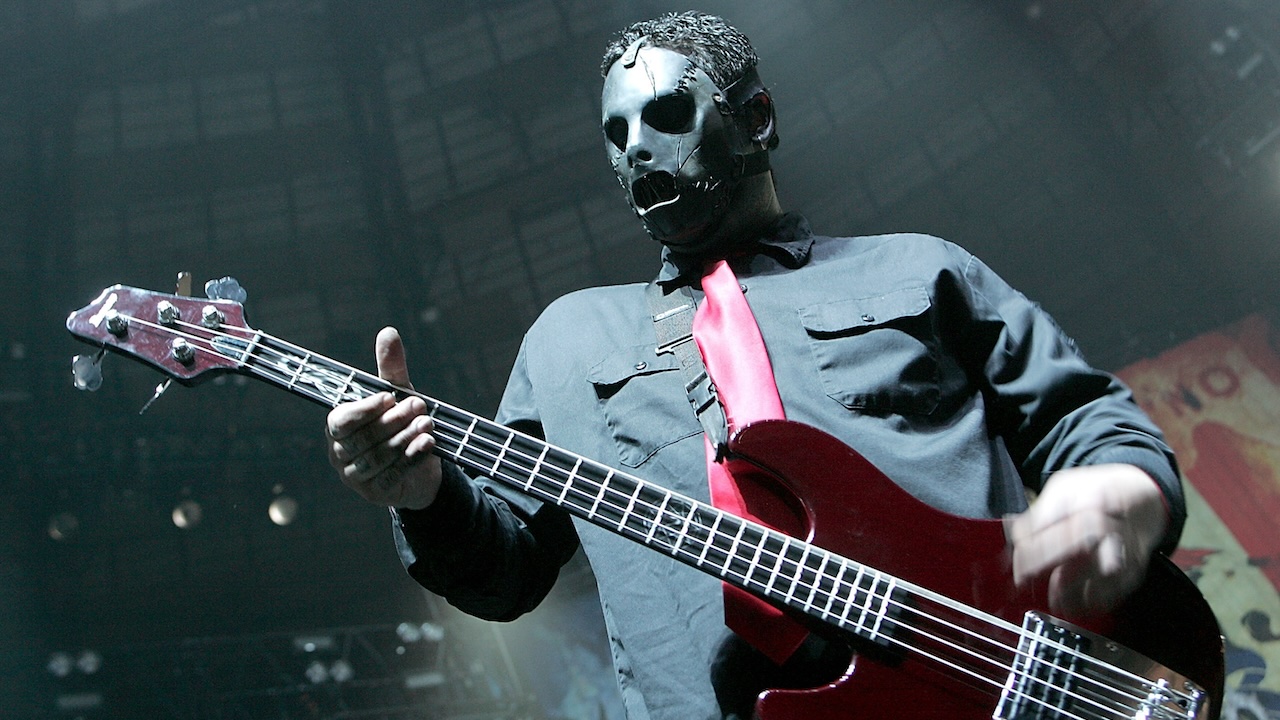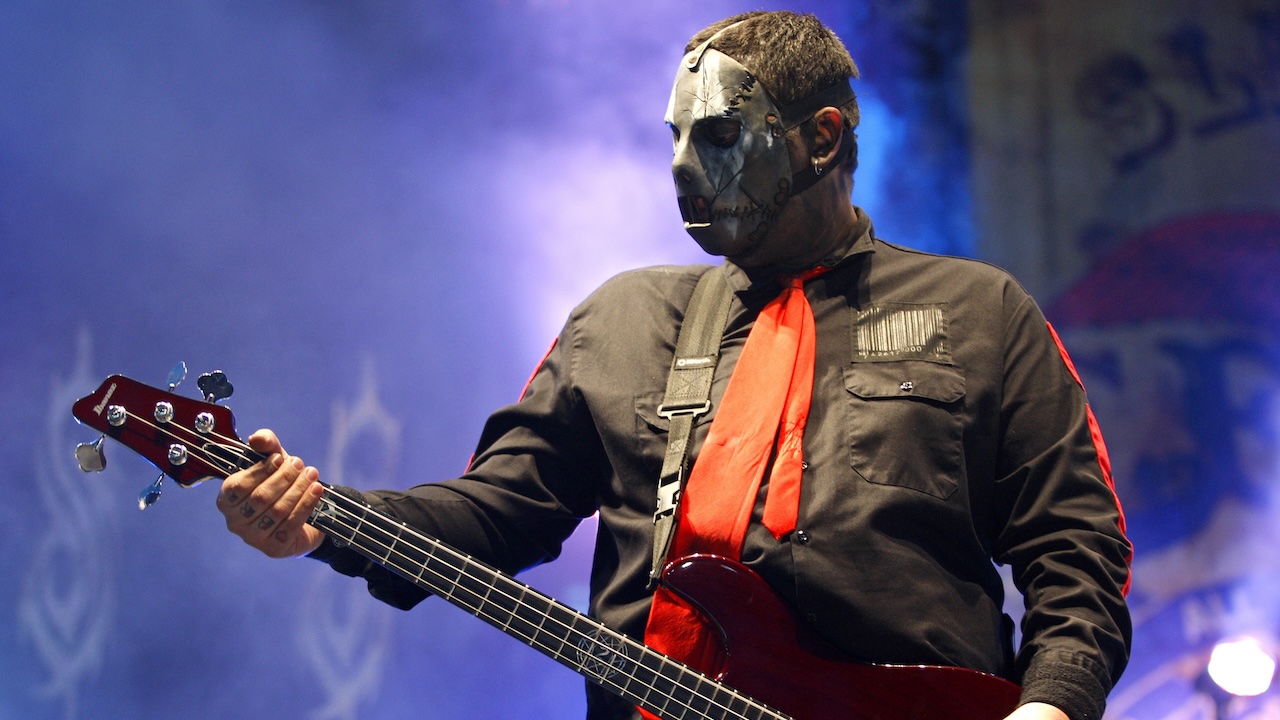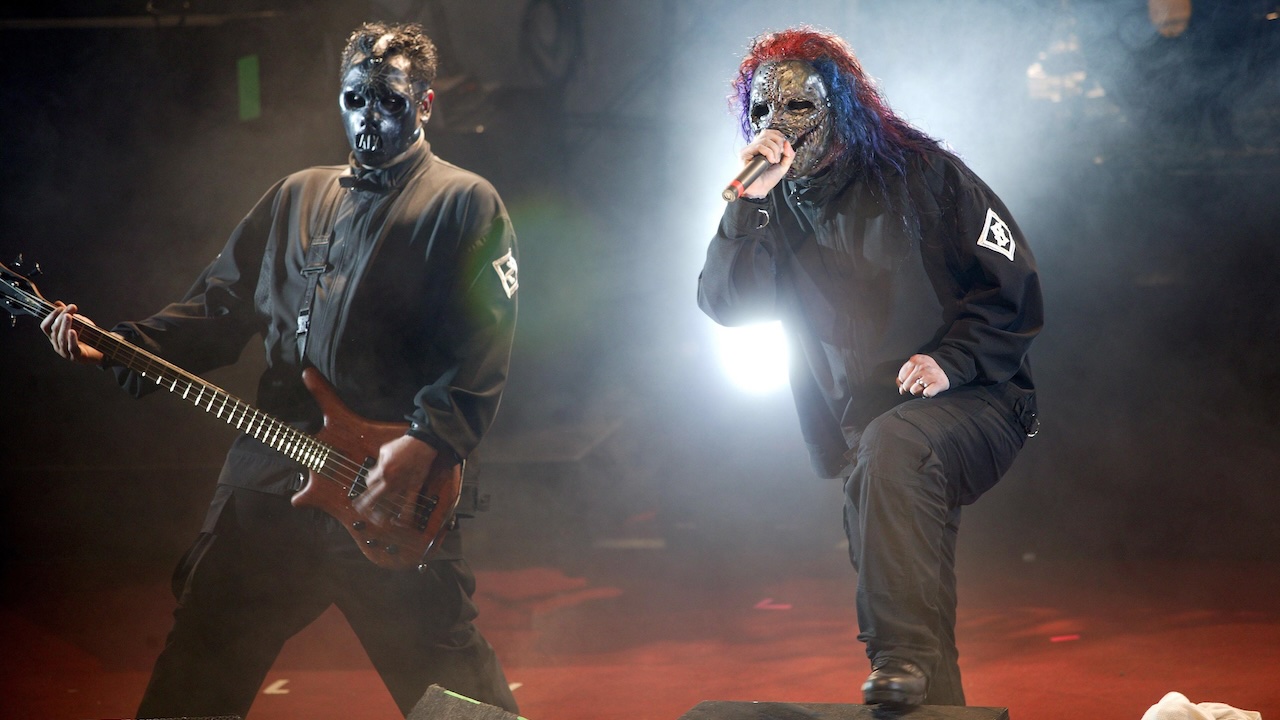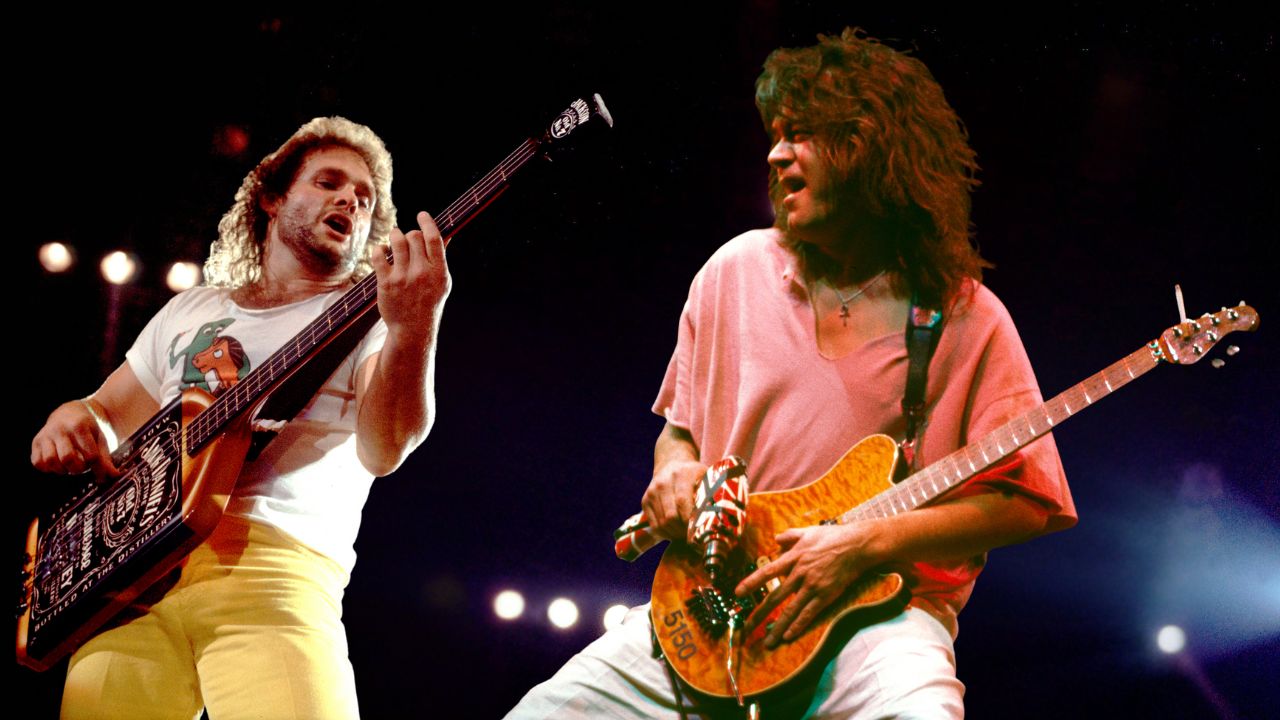“I wouldn’t be able to play the technical stuff while wearing the mask. I’ve almost passed out a few times”: Slipknot’s original bassist Paul Gray on holding the middle ground in metal’s most extreme band
Slipknot are one of the most visually arresting bands still working today – but the late Paul Gray’s role was decidedly different

Since thundering out of the lonely Iowa plains in the late '90s, the nine-piece masked metal symphony known as Slipknot have combined horror imagery, enraged vocals, intricate bass and guitar riffs, and punishing percussion, and turned it into a chart-topping success.
On the 2004 platinum album, Vol. 3: (The Subliminal Verses), the fretwork of left-handed bassist Paul Gray on hits such as Duality and Vermillion created a mood of menace before building up to the inescapable fury of agonised choruses and wailing guitar breaks.
Vol. 3 was produced in a seemingly haunted Hollywood mansion – formerly owned by the infamous escape artist Harry Houdini – where the band lived while tracking. “We had drum sets on every floor and amps in every room, with drum machines, Pro Tools rigs, and all kinds of stuff everywhere,” Gray told Bass Player. “So anytime anyone had an idea, we could just lay it down.”
The result of these round-the-clock recordings was a large backlog of material, some of which was released on Vol. 3: (The Subliminal Verses) Special Edition.
Before donning his mask, Gray supplied the bottom end to a few riff-crazed metal outfits, but with a crowded roster of two percussionists, a drummer, two DJs, and two guitarists, his role with Slipknot was decidedly different.
“With Slipknot, it's about songs, so I just try to play what the song requires, fit in with nine people and blend where it sounds good. As the bass player, it's easy to step on parts or drown somebody out. It's about finding that middle ground.”
Gray tragically passed away in 2010, with Alex ‘V-Man’ Venturella taking over the bassist role in the band. The following interview with Gray, from the Bass Player archives, took place in June 2005.
All the latest guitar news, interviews, lessons, reviews, deals and more, direct to your inbox!
Slipknot has nine band members, with a lot of heavy guitars and percussion. How does that define your role?
“I used to be in these death-metal bands where we would write riffs to be as complicated as possible; the whole purpose of the song was to see if anyone could play it. I would do tapping licks, and slapping, and nothing would repeat. There was no structure. It didn't make any sense.
“Now, I try to write parts that the songs need. It doesn't have to be flashy. I don't go up there to show off. I could if I wanted to, but it's not what our band needs.”

Does wearing a mask and being in character affect your playing, either physically or musically?
“Giving it 110 per cent while wearing a mask, I'll sometimes get tunnel vision and zone out. I've almost passed out a few times. Other than that, it's not that bad. I wouldn't be able to do some of the technical stuff while wearing the mask, because I would have to be looking and seeing what I was doing. With this thing on I can't see anything, so I'm just going off my fingerboard knowledge.”
What first drew you to the bass guitar?
“When I moved from California to lowa, I didn't know anybody – I went into a music store and overheard this guy saying he needed a bass player. He mentioned Slayer, Sepultura, and some Metallica songs.
“I knew all of that stuff on guitar. I had never picked up a bass in my life, but I went over and said, ‘I can play bass.’ The only reason I said it was just so I could meet people. I went in there and I just played the guitar lines instead of all basslines.”
“That's how I played at first, but then I really started listening to the bass playing and realizing how unique and awesome an instrument it is. I would just sit back and listen to a bass and drum groove, blocking out all of the guitar stuff.
“Red Hot Chili Peppers, Les Claypool, and Metallica became my influences – especially Cliff Burton. Then I started buying bass-player-oriented stuff like Stu Hamm, Jaco Pastorius, and Victor Wooten. Seeing Victor Wooten play was mind-blowing.”
Were there disadvantages to being a left-handed player?
“It's mostly the equipment part that's harder. If companies offer left-handed gear, they make it low-end, leaving the cheap, crap gear to left-handed players.
“I went out on Ozzfest in 1999 with one Jackson bass, and I did the whole tour with it in a gig bag. If it had gone down, I would have been screwed, because I was the only left-handed bass player on that tour.
“I was looking at Warwick. I thought that they'd be the last company to endorse me but I called them and they gave me a shot. They sent me a Corvette; it played awesome, and I finally had a real bass. I've been with them ever since.”

There's been a lot of buzz about the rebirth of heavy metal and how it's okay to solo again. How does this affect you?
“I'm down with it. Maybe it will be okay for bass solos to kick in! I do know that both of our guitar players can shred. But we write the way we want. If a song doesn't require a solo, we don't put it in. We have a few solos, but we're not put in that shredder category for some reason.”
Could that be because of snobbery about your band's theatrical aspect?
“That's probably it, too. They look at it and they go, ‘The band has sold millions of records and wears masks, so obviously they can't actually play their instruments.’ But we can actually all play our instruments well. We're out here playing shows to a lot of kids and having a good time doing it, and that's all that really matters to me.”

Nick Wells was the Editor of Bass Guitar magazine from 2009 to 2011, before making strides into the world of Artist Relations with Sheldon Dingwall and Dingwall Guitars. He's also the producer of bass-centric documentaries, Walking the Changes and Beneath the Bassline, as well as Production Manager and Artist Liaison for ScottsBassLessons. In his free time, you'll find him jumping around his bedroom to Kool & The Gang while hammering the life out of his P-Bass.

![Slipknot - Vermilion [OFFICIAL VIDEO] [HD] - YouTube](https://img.youtube.com/vi/xKcbYUwmmlE/maxresdefault.jpg)
